Current
Recommendations____
_________________________
“A Dance
like Starlight. One
Ballerina’s Dream.” By
Kristy Dempsey
Illustrator: Floyd Cooper
Publisher: Philomel, 2014
Ballet
books have been and continue to be so ubiquitous as to be largely
unnoteworthy. This one, by Dempsey, clearly stands above many
others. This is based on facts about the
career of the first African American ballerina to appear on the stage of the
Metropolitan Opera, set in the context of an imagined story about a little
girl’s aspirations to dance. Janet
Collin’s accomplishments are described in an author’s note, including that
she performed on a major stage before the better-known Marian Anderson
did.
But
the affirming aspect of this slight made-up story of a young black girl’s dream
is the way her seamstress single mother’s encouraged her daughter’s dream. The mother tells her that she should “…pick
your dream up…off the floor of your heart…”
The unnamed young girl who narrates the story is able to attend a
performance of Janet Collins because of her mother’s determination to encourage
the dream.
Floyd
Cooper, winner of both a Coretta
Scott King Award and an Honor designation for previous of his books, here
provides his usual softly-focused mixed media paintings which stretch across
the double page spreads. The text, set
in white, contrasts effectively with the pastel art.
“Josephine” by Patricia Hruby Powell
Illustrator: Christian Robinson
Publisher: Chronicle, 2014
If
there were a children’s book award given for sheer stylishness, this book would
be the clear winner!* What an impressive
combination of art, design, and typography choice. The art itself was created in acrylic, and Robinson has provided big, flat shapes
with bold outlines and repeating decorative patterns. These are usually set against solid
backgrounds with no extraneous details.
Some of the best of the art are such pages as the opening which shows
just Josephine against a block of color.
The art itself reflects the visual and written
record of the style of Josephine Baker
(1906-1975) who grew from an impoverished childhood to become the reigning
queen of dance halls in Paris and eventually garnered the respect that her
earlier life in the United States denied her.
Opening
and closing endpapers in bright rusty orange feature a silhouette- like image
of Josephine bowing the reader into the book and facing back into the book at
the close. Chapter openings framed in
stage curtains divide her life into segments by year, and end notes include
Further Reading and Quote sources as well as statements from both the author, Patricia Hruby Powell, and the
illustrator. There is a rhythm set up in
which a double spread with art and a smaller amount of text alternate with
facing pages on which a lot of text moves the biography along. Baker’s actual quotes are set in a type face
different than the san serif one used for the major text.
The
hard life of the daughter of a single mother who scrubbed floors, she always
dreamed of dancing. Starting out with a
traveling family of vaudevillians, she managed to get herself a spot dancing
and her immense talent quickly became apparent to others in the segregated world
in which she lived. It was apparent
early that her talent for dancing (and for enhancing the effect with unusual
and often minimal costumes) was her key to success on stage. The author comments that she “wiggled like a
serpent, slunk like a panther, and boxed like a kangaroo…” and that would lead
to stardom. If there wasn’t a job dancing, she served as dresser for others in
the show.
But
opportunities in the United States were limited and Paris was to be the key to
the success she craved. Tours through
Europe and South America followed to more critical acclaim. But prior to WW2, Europe “had come to a hard
simmer,” and when war finally broke out, Josephine involved herself in a variety
of unexpected activities, including working in a soup kitchen and serving as a
spy for the resistance. The illustration
of her tucking a bit of information into her stocking is humorous. Her life after the war was lived luxuriously
but as she spent money faster than it came in, she had to tour again. The appearance in Carnegie Hall at the age of
67 brought her acclaim and she continued touring. Finally, a performance in a Paris venue
brought more acclaim, and as many creative artists hope, she died doing what
she loved doing, that night after the show.
The
author creates imaginative language and doesn’t avoid words that child readers
may not know, like “effervesced.” “C’est
magnifique,” in fact described her.
*A reviewer once commented
about the work of Evaline
Ness that it was “as stylish as a Gucci bag.” Whether as a compliment or a criticism isn’t
clear!
"Twelve Dancing Princesses" by Dorothee Duntze
Publisher: North South, 2013
Duntze creates
an appropriate, if not unexpected pastel world in which to set this tale. She
minimizes the unpleasantness (i.e.: each man who comes to try to discover the
princesses’ secret loses their heads), but the princesses continue to elude
their father's consternation at where his daughters go to dance every night.
The artist
creates a fanciful array of colors and patterns with no particular connection
to a realistic depiction. The girls' dresses, for example, are not simply an
exploration of color and pattern. The bell-like shapes of the ball gown skirts
make another pattern of their own on the page. Attenuation is a hallmark of
Duntze's art: her women are about 9 heads tall, from top to toe, and clearly
thin as rails. The illustrator uses a variety of page layouts. This includes
some double spreads, set amidst small individual pieces of art facing single
page spreads. Type is placed in a variety of locations on these borderless
pages.
An interesting experience with youngsters could be
to use the Duntze version and compare It with a different retelling. This
is only one of many retellings which often reveal variation in plot and
language. Another interesting comparison could involve children in looking at
either her Rapunzelor her retelling
of the Princess and the Pea.
Click here for Purchase and Inquiry.
"Saint-Saens's:
Dance Macabre" by Anna Harwell Celenza
Illustrator:JoAnn
E. KitchellPublisher: Harcourt, 2013
In the mid 19th
century the streets in Paris were full of life, though underneath the city is a
cemetery which fascinated people to the degree that these catacombs were open
for people to visit. The widely respected composer, Camille Saint-Saens was
one of the many visitors. The result has become one of his most popular pieces
of music.
For those not familiar
with this piece the publisher has included a CD with a performance by the
well-respected Pittsburgh symphony led by one of the most important
contemporary conductors, Lorin Maazal. The author and illustrator have here
produced the 8th title in a very popular series. It runs from Bach to
Ellington. Celenza deals with only part of the composer’s life, well written to
bring his thoughts and words to life for young children. A prominent poet of
the time, as well as a very popular singer also included in the action
surrounding the composition of this ballet.
Kitchell’s art continues
the visual approach in the earlier books. A firm black pen line outlines
naturalistic colors with little attempt to create the third dimension. Celenza,
a professor of music, presents authentic research in an author’s end note,
though the book itself can communicate with children without this.
An interesting aspect of
this particular book is that it describes the reaction when the work was first
performed. Some people in the audience applauded but others shouted their
displeasure, for instance “Scandalous!” How interesting that the work elicited
such strong feelings in the same way that Stravinsky’s *Rite of Spring did.
Musicians who explore the boundaries of conventional composition, like
**Charles Ives, are often not appreciated until much later.
Authors of books for
children about the arts are particularly important in this era when children
are far less likely to encounter music and arts program in the schools. The job
of acquainting children with the arts thus often falls now to grade level
generalists who can certainly appreciate the help that books like this offer
them.
*Book about this by
Lauren Stringer is review elsewhere in the “music” blog section.
**See Charles Ives
Review elsewhere in the "music" blog section
Click here
for Purchase and Inquiry.
Previous Recommendations
_________________________
"Bea At Ballet" by Rachel Isadora
 Author: Rachel Isadora
Author: Rachel IsadoraPublisher: Nancy Paulson Books, 2012
"Bea At Ballet", by Rachel Isadora, is much more than a ballet primer for the preschool set. True, it includes clearly labeled items, from clothing to equipment to positions, simply but appealingly portrayed on wide white spaces with accurate terminology. Etiquette and expectations during lessons are depicted as are genuine fascination and love of ballet.
But it is much more.
This is a lovingly told story of how Bea and her friends view ballet. Isadora
blends her Caldecott Honor-winning black lines from BEN'S
TRUMPET and pastel palette from ON YOUR TOES: A Ballet ABC in this story of a
ballet class with young Bea. Mocha the well-mannered dog observes Mr. Paul and
Ms. Nancy teaching a diverse troupe of toddlers who engage, body and spirit, in
every aspect of ballet.
Isadora’s gently
curved lines, expressive features, subtle gestures and shading, delicate
patterns and soft edges all create impressively competent round-bellied dancers
floating in an almost magical white space. Their earnest efforts include
pointed toes, graceful hand extensions, and utterly believable spins and
stumbles. From cover to cover it is evident: Bea and her friends LOVE to dance.
Bea's class is delightfully
diverse and includes young boys whose enthusiastic efforts show great promise.
Here's hoping the current popularity of dance in mass media will provide
cultural acceptance of that interest, rather than resulting in the teasing
depicted in OLIVER BUTTON IS A SISSY, by Tomie dePaola, a reaction more
typical in the past.
Click here
for purchase and inquiries
"When Stravinsky
Met Nijinsky" by Lauren Stringer
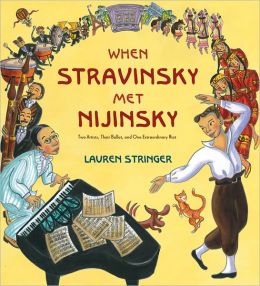 Author: Lauren Stringer
Author: Lauren Stringer Publisher: Harcourt, 2011
The works of this
composer (1882-1971) and dancer (1889-1950), changed the face of modernism in
those arts. Of the two, Stravinsky is the better known to audiences today,
though indeed he isn’t widely known beyond classical music fans. Nijinsky,
the best known dancer of his era, is almost completely unknown today, apart
from dance enthusiasts. When the two met, and created the Rite of Spring (Le
Sacre du Printemps) they may not had been aware that they have been creating an
event of sound and movement unlike anything else which preceded it.
The story line
describing this event includes a well-crafted parallel description of the
people in the audience who loved the production and those who hated it. Reports
on the riot which occurred at the conclusion of the 1913 premier was widely
reported in the popular media.
The aural and visual
images which author Stringer composes with her words are impressive.
For example when Stravinsky composed by himself , “his piano trilled an
orchestra…”When Nijinsky composed dances by himself, “his legs
leaped- a deer!” . These images contrast effectively with that Stringer writes
for Stravinsky (“His piano pirouetted a puppet…”) and for Nijinsky (“His torso
trumpeted a melody…”) She continues with interesting patterning in writing in
describing the audience divided reation at the premiere. “They stood on their
seats and shouted: “Boo! Boo! Boo! “ contrasted with : “They stood on their
seats and shouted: Bravo! Bravo! Bravo!”
The author provides
extensive end matter, including a description of how she came to research and
write this duo biography, brief factual paragraphs about each of the men, other
material about the dance itself, and finally some notes about her creation of
the art for the book. All of this is quite interesting to adults but probably
won’t be of much interest to children. This raises as do some other recent
picture books about important adult creators in the arts. A question to be
considered. Who is the audience for such books. Kathleen T. Horning deals with
the important question of audience in her article about Madeline's Rescue (The
Horn Book Magazine, May/June, 2013 P35-41).
For further information
about these important creators, see:
Click here
for Purchase and Inquiry.
"Ballet For Martha: Making Appalacian Spring" by Jan
Greenberg and Sandra Jordan
Illustrator: Brian
Floca
Publisher: Roaring Brook Press, 2010
Publisher: Roaring Brook Press, 2010
Martha Graham,
(1894-1991), the doyenne of modern dance, influenced many if not most of the
modern dancers working until now, and reshaped what was considered dance. While
ballet continues to be the most prevalent dance form performed on stages, when
Martha began to rethink what she wanted to convey through her evolving very
spare approach to movement, it was truly revolutionary. Born nearly 20 years
earlier, Ruth St. Denis was also exploring new forms of dance though it was
Graham whose name remains in the general consciousness.
After studying with Ruth
St. Denis at the Denis Shawn Troop she set out on her own. Her process of
developing Applechian Spring is unique. Before developing the dance, she wrote
the script, a task one does not ordinarily think dancers do. In this case her
dance making included not only the process of writing, and planning the steps
but also of editing the dance as it evolved. It also included working with the
composer, Copland and the set designer, Noguchi
Graham was convinced of
the rightness of the path she was forging. It included, “…rarin’ to go rhythms…”
though many of the movements she designed throughout her long career were not
conventionally pretty.
The book includes
sections: “Curtain Call,” biographical sketches of Graham, Aaron Copland, (1900-1990)and Isamu Noguchi(1904-1988).
The three artists most directly involved in creating Appalachian Spring, as
well as a section of notes and sources.
The two authors,
Greenberg and Jordan have collaborated to critical accolades for a number of
books described on their website ( http://www.jangreenbergsandrajordan.com)
Click here
for purchase and inquiry.
"Footwork:
The Story of Fred and Adele Astaire" by Roxane Orgill
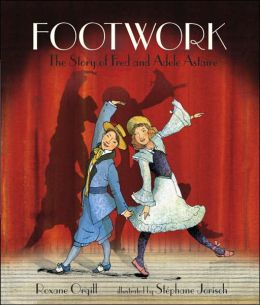 Author: Roxane Orgill
Author: Roxane OrgillIllustrator: Stéphane Jorisch
Publisher: Viking, 2007
Reviewed by: Kristine Wildner, Holy Apostles School, New Berlin, WI
Focusing on the early dancing careers of Fred Astaire and his older sister Adele, Roxane Orgill takes us back to the magical time of dance entertainment during the early 20 th century in an illuminating picture book biography. Beginning their dance careers as children, the Astaires performed on the vaudeville-circuit, eventually moving on to Broadway. Equal partners, the pair experienced a few growing pains, yet persevered through hard work, determination, and innovation. As Fred moved on to motion pictures, Adele quietly retired to family life.
Although most of today's children have never heard of Fred Astaire
and know little of his legacy within popular entertainment, they will be
inspired by his early dance career with his sister.
Stéphane Jorisch's line and water color illustrations bring the
Astaire's story to life. His attention to detail and masterful depiction of
light and shadow transport the reader back in time to the magical settings of early
20 th century dance. Alternating text and picture boxes with full page spreads,
the layout invites the reader into the world of show business. Emotions of not
only Fred and Adele, but also the stage hands and audience depict the
excitement of this matchless time and place. For older children, an interesting comparison would be to look at the art that Jorisch did for Lewis Carroll's Jabberwocky (Kids Can Press, 2004), quite different than the art for the Astaire book.
Footwork: The Story of Fred and Adele Astaire includes resources for further reading, listening, viewing and websites and is an excellent stepping stone to further research. Traditional values of hard work, practice, and perseverance permeate the story. Fred is a prime example to boys who enjoy dance and to everyone who works hard to perfect and improve their craft.
Footwork: The Story of Fred and Adele Astaire includes resources for further reading, listening, viewing and websites and is an excellent stepping stone to further research. Traditional values of hard work, practice, and perseverance permeate the story. Fred is a prime example to boys who enjoy dance and to everyone who works hard to perfect and improve their craft.
Illustrator: Raúl Colón
Publisher: Simon & Schuster, 2005
Susanna Reich, formerly a dancer,
clearly knows how to present the most important parts of the story she is
telling. Having researched the life of this Mexican performer, teacher, and
choreographer, Reich recounts enough specifics to draw readers along the path
from José's noisy birth,
through his uncertainty approaching a career, to his meeting two of the most
important figures in the dance world, Doris
Humphry and Charles Weidman. Drawing
on their influences, Limón
formed his own touring dance company and influenced many young dancers as a
teacher at Julliard, one of the most prestigious art schools in the US.
His determination to master
challenges emerged early, when as a new emigrant child, he encountered other
children's prejudice. Early in life José was interested in both art and
music but the meeting and ongoing connection with Humphry and Weidman was to
help him make a final career choice. Unlike others who chose to dance, Limón came to the art form when already
a young adult. Clearly this was another challenge to overcome, as after only
six weeks of study he was able to make his debut.
Colón's art is full page, soft edged presentation
of key moments in José's life. Suitably hazy colors with minimal though sufficient
background details. Color is especially masterful in breaking up space. For
example, when he frames José's head when the child is sitting at
the breakfast table, the back and sides of the chair form a frame (second
opening). The leaving home composition (ninth opening) is another example.
Readers might compare this with “Dance” written by
Bill T. Jones reviewed at the bottom of this section of the blog.
Click here for Purchase and Inquiry.
“Dance” by Bill T. Jones
Photographer: Susan Kuklin
Publisher: Hyperion, 1998
Publishers find ballet
books a lucrative market. Young girls consume these with gusto far less
frequent among these books are those which include a token boy. Very unusual is
a book focusing on a male dancer. Thus Hyperion is to be commended for focusing
on a modern dancer, a male. This extends both the awareness of gender as well
as reaching beyond conventional ballet.
On helpfully empty white
pages, Jones shows through Kuklin’s photographs(http://www.susankuklin.com/)
and his purposefully simple sentences, the many reasons he dances, what he
feels when he dances, and how he uses his entire body to accomplish his
purposes. The photos and words show clearly how he prepares his work, the
shapes (lines and curves) he makes and how he uses space (high and low). All
together an admirable combination of dancer and photographer celebrating two
arts together.
Here is another idea for
Hyperion; as Jones is both a dancer and also a choreographer, how could they
produce an equally effective book about the art of choreography?
To see Jones moving, go to: http://www.youtube.com/watchv=NOSsDHLooi0&feature=related
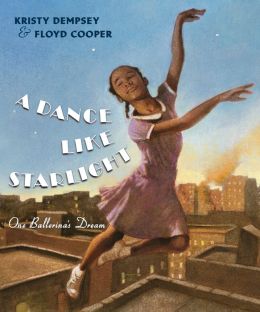
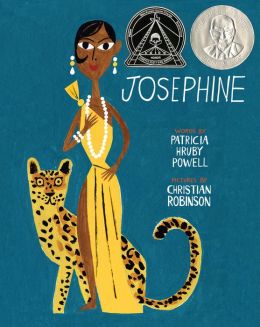
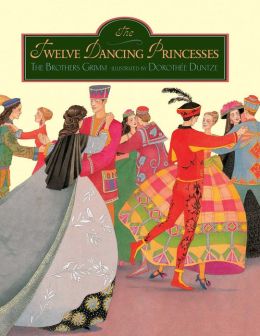
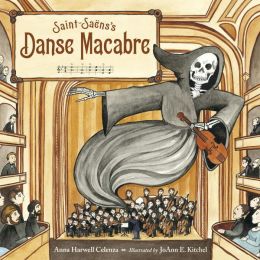
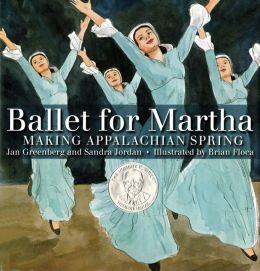

No comments:
Post a Comment